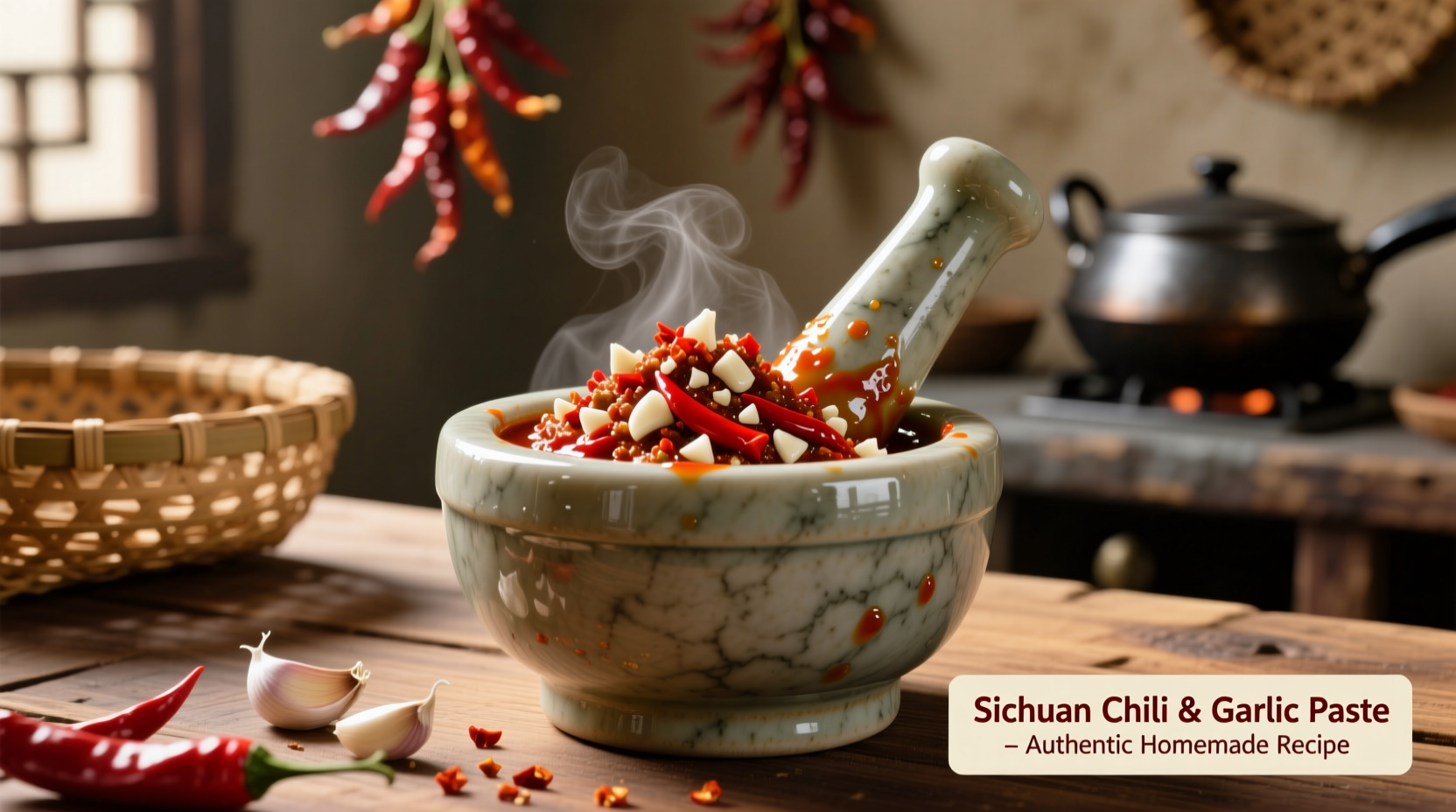Unlock the full potential of one of the world's most essential flavor foundations. Whether you're stir-frying, marinating, or creating signature sauces, understanding chilli and garlic paste transforms ordinary meals into extraordinary culinary experiences. This comprehensive resource delivers actionable insights from professional kitchens to your home cooking routine.
The Global Journey of Chilli and Garlic Paste
Chilli and garlic paste represents one of humanity's most enduring flavor partnerships. While garlic has been cultivated for over 5,000 years across Asia and the Middle East, chillies entered the global spice network only after Christopher Columbus brought them from the Americas in the late 15th century. The transformative moment came when Asian and African cooks discovered how perfectly these ingredients complemented each other.
1493: Columbus returns to Europe with chilli peppers from the Caribbean
1542: Portuguese traders introduce chillies to Africa and Asia
16th century: Southeast Asian cooks begin blending chillies with local garlic varieties
19th century: Commercial production of chilli garlic paste begins in Thailand and Indonesia
1970s: Global popularity surges with the rise of international cuisine
Understanding Different Paste Variations
Not all chilli garlic pastes are created equal. Regional variations reflect local ingredients, climate conditions, and culinary traditions. Recognizing these differences helps you select or create the perfect paste for your cooking needs.
| Regional Variation | Key Ingredients | Heat Level | Primary Culinary Use |
|---|---|---|---|
| Thai Nam Prik Pao | Bird's eye chillies, garlic, shallots, shrimp paste | ★★★★☆ | Stir-fries, dipping sauces, soup bases |
| Indonesian Sambal | Cayenne peppers, garlic, terasi (shrimp paste) | ★★★☆☆ | Rice dishes, grilled meats, vegetable accompaniments |
| Mexican Chile Ajillo | Arbol chillies, garlic, vinegar | ★★★★★ | Moles, marinades, bean dishes |
| Chinese Doubanjiang | Fermented broad beans, chillies, garlic | ★★★☆☆ | Mapo tofu, stir-fries, braises |
When Chilli Garlic Paste Works Best (And When It Doesn't)
Understanding context boundaries prevents culinary missteps. While incredibly versatile, this paste has specific applications where it shines and situations where it falls short.
Ideal applications:
- Stir-fries requiring instant flavor infusion
- Marinades for proteins (allow 30-60 minutes for optimal flavor penetration)
- Base for soups and stews (add during initial sauté stage)
- Quick sauce enhancements (stir into finished dishes)
Limited effectiveness:
- Delicate seafood dishes (overpowers subtle flavors)
- Baking applications (heat alters flavor profile)
- Cold preparations without cooking (raw garlic bitterness)
- Desserts (incompatible flavor profile)
Creating Authentic Homemade Paste
Commercial versions often contain preservatives and sugar that alter authentic flavor profiles. Making your own ensures pure, vibrant taste while allowing customization to your preferred heat level.

Basic Traditional Recipe
Yield: 1 cup | Prep time: 15 minutes | Shelf life: 3 weeks refrigerated
Ingredients:
- 8-10 fresh red chillies (serrano or bird's eye for authentic heat)
- 6 large garlic cloves, peeled
- 1 teaspoon sea salt
- 2 tablespoons neutral oil (grapeseed or avocado)
- 1 tablespoon rice vinegar (optional for preservation)
Preparation:
- Remove chilli stems and roughly chop (keep seeds for maximum heat)
- Combine chillies, garlic, and salt in food processor
- Pulse until coarse paste forms (avoid over-processing)
- With processor running, slowly add oil until emulsified
- Transfer to sterilized jar, top with thin oil layer to preserve
- Refrigerate 24 hours before use to allow flavors to meld
Professional Cooking Techniques
Chefs leverage chilli garlic paste through specific techniques that maximize flavor development:
The Blooming Method: Heat 1-2 tablespoons oil in wok until shimmering, add 1-2 teaspoons paste, and stir-fry for 30-60 seconds until fragrant but not burnt. This technique unlocks complex flavor compounds that raw application cannot achieve.
Marinade Science: For proteins, combine paste with acidic components (like lime juice) which helps break down muscle fibers while allowing flavor penetration. Allow minimum 30 minutes for fish, 2 hours for poultry, and 4+ hours for red meats.
Flavor Layering: Add paste at multiple cooking stages—initial sauté for base flavor, and again at the end for fresh, vibrant heat. This creates dimensional flavor rather than single-note spiciness.
Storage and Shelf Life Guidelines
Proper storage maintains flavor integrity and prevents spoilage. Commercial products typically contain preservatives extending shelf life, while homemade versions require careful handling.
Refrigeration: Store in airtight container with thin oil layer on surface. Homemade paste lasts 2-3 weeks; commercial versions 6-8 weeks after opening.
Freezing: Portion into ice cube trays, freeze solid, then transfer to freezer bags. Maintains quality for 6 months. Thaw overnight in refrigerator before use.
Signs of spoilage: Mold growth, sour smell, separation that doesn't reincorporate with stirring, or significant color change from vibrant red to brown.
Signature Dishes Featuring Chilli Garlic Paste
Master these authentic applications to elevate your cooking:
Thai Basil Pork (Pad Krapow): Stir-fry 2 teaspoons paste with 1 pound ground pork until fragrant, then add holy basil, fish sauce, and a fried egg on top.
Indonesian Nasi Goreng: Mix 1 tablespoon paste into fried rice during initial cooking stage for authentic flavor foundation.
Mexican Chile de Árbol Sauce: Blend 2 tablespoons paste with roasted tomatoes and chicken broth for authentic mole base.
Chinese Garlic Chili Green Beans: Blanch beans, then stir-fry with 1 teaspoon paste and minced garlic for 2 minutes until blistered.











 浙公网安备
33010002000092号
浙公网安备
33010002000092号 浙B2-20120091-4
浙B2-20120091-4